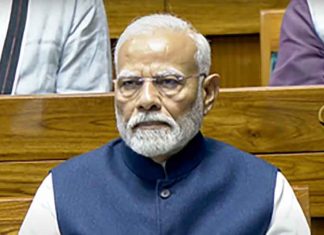Mumbai, June 20, 2024
RBI Governor Shaktikanta Das on Thursday said that “necessary policy actions” are on the anvil for positioning the Reserve Bank as a model central bank of the Global South.
“As the Reserve Bank approaches its centenary year, we have drawn up strategies that will gear it up to remain future-ready for India’s fast-growing economy,” Das said at the Global Conference on Financial Resilience.
“Our goal is to make the Reserve Bank’s supervision a global model, by building a ‘Through the Cycle’ Risk Assessment Framework with continuous Horizon Scanning and a Holistic Risk Assessment. It also envisages having a more customer-centric framework that protects and promotes customers’ interest by improving the conduct of supervised entities,” he said.
He said that the Reserve Bank has significantly strengthened its supervisory systems, transitioning beyond an entity-focused approach to a more thematic and activity-based approach.
“We now look at the sustainability of business models of banks and NBFCs. Root cause analysis of problems and vulnerabilities is undertaken. Advance action is initiated wherever we notice or smell a crisis,” he remarked.
Das further said that structural changes have been implemented within the Reserve Bank by creating a unified department of supervision to ensure a holistic assessment of the financial sector as well as to analyse the health of multiple entities within a group.
The idea is to enhance the agility and comprehensiveness of supervision. Unconventional methods are also being adopted now. Onsite supervision of Credit Information Companies has been made annual and intense.
As risks evolve and new challenges emerge, the Reserve Bank as a regulator and supervisor constantly focuses on being vigilant, adaptive and proactive with regard to the regulatory frameworks and supervisory systems to safeguard the stability of the financial system, the RBI Governor said.
Over the past few years, the Reserve Bank has undertaken a comprehensive review of regulations under the aegis of the Regulations Review Authority (RRA) 2.0 constituted by it. Apart from the withdrawal of many redundant instructions, the RRA has also made valuable recommendations to ease compliance and reduce the regulatory burden; streamline the reporting mechanism; and bring in more clarity in regulatory instructions, he added.
Das stated that in recent years, the Reserve Bank has also comprehensively restructured the regulatory architecture for banks, NBFCs, Housing Finance Companies (HFCs), Asset Reconstruction Companies (ARCs), Digital lenders, Micro-finance lenders and core investment companies.
Thus, the financial sector regulations are now not only in sync with the changing times but also forward-looking with the required readiness to take further proactive measures as may be necessary.
He also said that India’s domestic financial system is now in a much stronger position characterised by robust capital adequacy, low levels of nonperforming assets, and healthy profitability of banks and NBFCs.(Agency)









































































